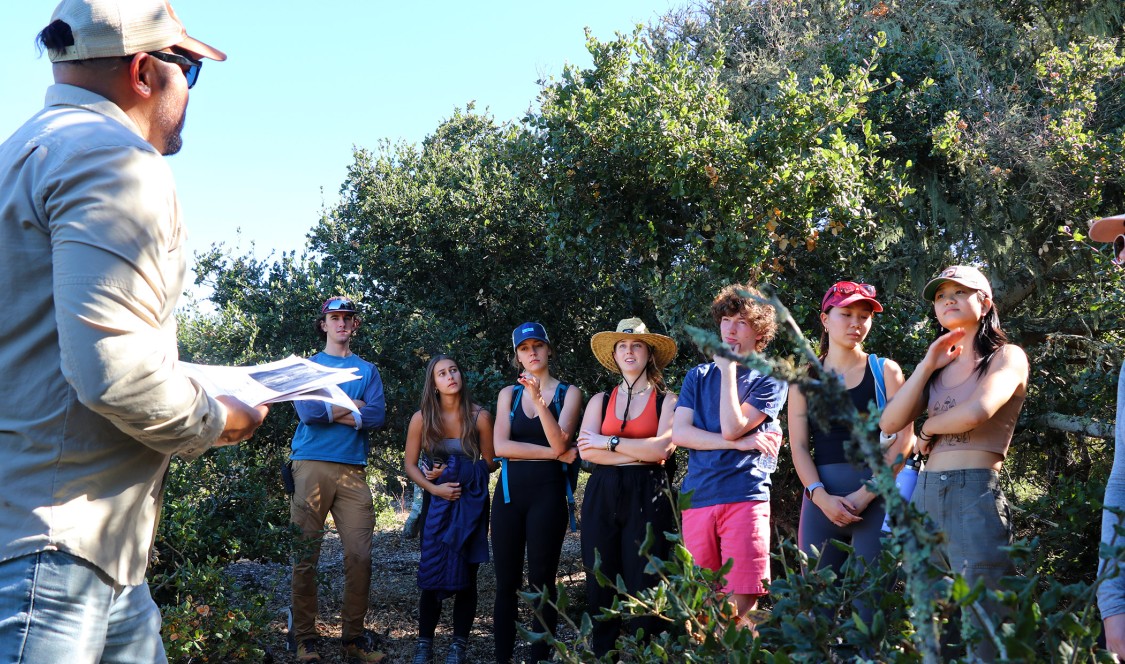Conducting carbon offsets research, crafting investment pitches, and developing curricula for middle-schoolers, are just a few skills that Claremont McKenna College students learn as Roberts Environmental Center (REC) Fellows.
Mateo Thacher ’24, team manager with the REC’s Green Consulting Group leads research and develops content for a variety of projects, which enhance what he’s learning in the classroom. An Economics-Music major at CMC, Thacher joined the REC as a sophomore, in pursuit of a strong interest in the environment.

His experiences with the REC include a partnership with The Nature Conservancy on the development of an environmental education program based on the Jack and Laura Dangermond Preserve, a nature reserve in Santa Barbara County.
Spanning more than 24,000 acres, the preserve has remained virtually untouched by development, making it an ideal home for conservation and research. “At the preserve, I really experienced the work of a researcher, of a scientist,” he said, noting that the “living laboratory” offers unfettered opportunities to observe different species — such as mountain lions, bears, and marine mammals — their habitats, and how these diverse species interact.
But it was learning about efforts to encourage the recovery of critically endangered steelhead trout that most resonated with Thacher, who grew up in nearby Ojai, where the fish can be found in the local watershed. “That hit home for me,” he said. “It felt personal, emotional.”
Being on the preserve with 12 REC Fellows provided Thacher with an indelible CMC memory. “At the end of our trip, we were on this beautiful pristine beach — just gorgeous. We all took our shoes off and ran around barefoot through the sand, and we saw a little seals swimming off shore. I’ll always remember that.”
“Getting students off campus and into the environment is invaluable,” said Branwen Williams, director of the Roberts Environmental Center, and the George R. Roberts Professor of Integrated Sciences: Environmental Science.
And then there’s the “learn by doing” component, as Williams noted that the REC-Nature Conversancy partnership currently involves developing and evaluating environmental education curricula for underserved seventh graders in Santa Barbara County, including a pilot program to be based on the reserve.

With the goal of involving CMC students in “real-world environmental issues and to train them to analyze the issues from as broad a perspective as possible,” the REC attracts fellows from a diverse slate of majors. “The REC is discipline-agnostic,” Williams said. “We need students from all disciplines, from the humanities, economics, business, and finance, for example. We need social scientists, and we need natural scientists.”
And, as the REC strives “to cultivate environmental leadership,” Williams noted that she sees how CMC can lead climate progress. “All students can participate in solving climate problems, but we are also training science-literate students, particularly in environmental awareness,” she said.
Additional hands-on REC collaborative projects include conducting research in partnership with alumna Olivia Jacobs ’14, principal with Xyla Land and Resource Advisors, to analyze forest carbon offsets.
Thacher finds these partnerships rewarding, because they provide opportunities to learn to work as a member of a team, as well as the satisfaction of seeing REC research put to good use. And then there is the “real-world” preparation, such as honing his interview and networking skills as he readies himself for life after CMC.
“I’m passionate about working in the environmental field,” Thacher said. “The REC has been a great gateway and I’ve made some amazing connections.”

